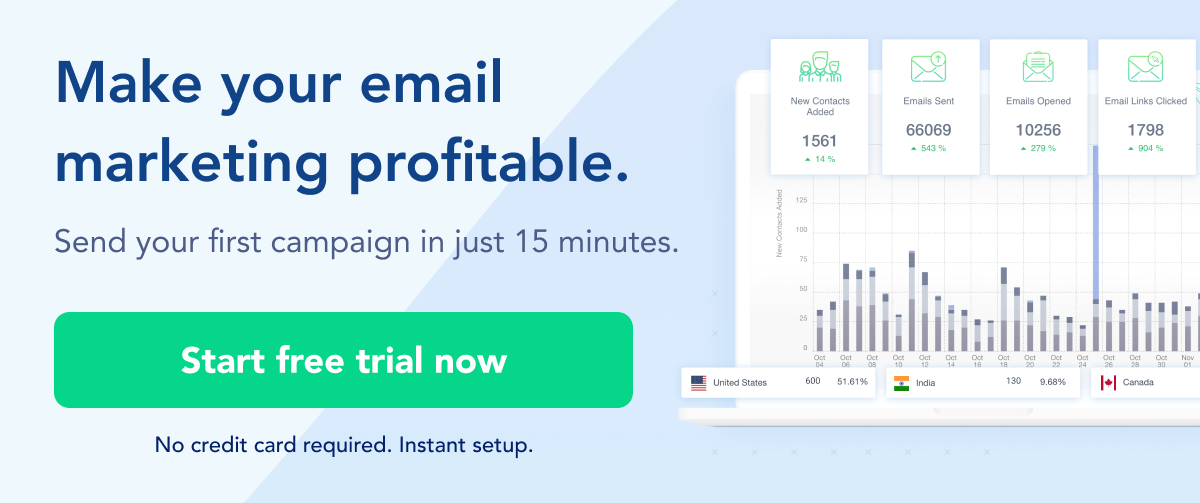In the world of emails, where every message is fighting for a moment of your attention, emojis stand out like a friend waving in a crowded room.
Think about it: when you're scrolling through your inbox, what makes you stop and read? It's not always the long paragraphs or the formal greetings. More often than not, it's those colorful, fun emojis that pull you in, promising something interesting on the other side of that click 😀 🎉 🛍️.
This blog dives into the transformative power of emojis in email marketing, exploring how these tiny digital expressions are not just embellishments but strategic tools that can amplify your message, connect with your audience on an emotional level, and even boost your open rates.
Table of Contents
Guidelines for Choosing the Right Emojis
Selecting the right emojis for your email marketing isn't just about picking the most colorful or popular ones; it's about finding emojis that resonate with your brand voice and appeal to your audience while being mindful of cultural sensitivities.
Here are some guidelines to help you navigate the world of emojis in your marketing efforts:
- Understand Your Brand Voice: The emojis you choose should be a reflection of your brand's personality. If your brand is more professional and business-oriented, opt for emojis that are less whimsical and more subdued. For a brand with a playful or casual tone, feel free to use more expressive and fun emojis.
Feel free to use a wider range of emojis, like faces with various expressions (😂, 😍, 🤩), or fun symbols (🎉, 🚀, 🌈).
- Know Your Audience: Consider the demographics and interests of your audience. What might resonate with a younger, tech-savvy crowd could be different from what appeals to an older, more traditional audience. Understanding your audience's preferences and sensitivities is crucial in selecting emojis that they will appreciate and relate to.
- Consider Cultural Context: Emojis can have different meanings in different cultures. What's considered a positive gesture in one culture might be offensive in another. Research the cultural implications of emojis to ensure they are appropriate for your audience's cultural context to avoid misunderstandings or offending your subscribers.
Utilize emojis that resonate with local customs and festivals, for example, using the cherry blossom (🌸) for a Japanese audience during Sakura season.
Avoid emojis that may have negative connotations in certain cultures, like the thumbs up (👍) which can be considered rude in some Middle Eastern countries. Instead, use more neutral symbols like stars (⭐) or the globe (🌍) to represent excellence or a global perspective.
- Use Emojis to Complement Your Message: Emojis should add value to your message, not confuse it. Use them to highlight key points, evoke emotions, or break up text to make your email more engaging. However, make sure they are relevant to the content of your email and do not detract from your main message.
For example, Use the money-mouth face (🤑) or bag of money (💰) to highlight discounts or savings.
- Test for Compatibility: Not all emojis display the same way across different devices and email platforms. Test your emails on various platforms to ensure the emojis appear as intended. This helps avoid sending emails with broken or unrecognizable symbols that could detract from your message's professionalism.
Send test emails to different email clients (Gmail, Outlook, etc.) and devices (iPhone, Android, desktop) to ensure emojis like the heart (❤️) appear consistently and don't turn into question marks (❓) or blank boxes (⬜).
The Impact of Using Emojis in Email Subject Lines, on Open Rates
The use of emojis in email subject lines has become a popular strategy for many marketers, primarily due to its impact on open rates. This visual appeal can significantly influence a recipient's decision to open an email, offering a break from the monotony of text-only subject lines in a crowded inbox.
Here's how emojis can impact open rates and why they're worth considering in your email marketing strategy:
Increased Visibility
Emojis catch the eye more effectively than words alone. In a sea of emails, those with emojis in the subject lines can stand out, making recipients more likely to notice and open them.
Emotional Connection
Emojis convey emotions and can make your message feel more personal. This emotional connection can increase the likelihood of your email being opened. For example, a smiley face (😊) can evoke a sense of warmth and friendliness, while a heart (❤️) can convey passion or love for a subject.
Brevity and Clarity
Emojis can communicate ideas or emotions quickly, without the need for long subject lines. This brevity is especially effective in today's fast-paced world, where people often skim through their inboxes. A sun emoji (☀️) for a summer sale or a Christmas tree (🎄) for holiday deals can immediately convey the theme of the email.
Examples of Emojis in Subject Lines
Mindvalley emails
- Strategic Emojis for Urgency and Events: Emojis are used to underscore urgency or timing, such as the alarm clock (⏰) for "Time's Ticking" or the calendar ( ⌛ ) to denote an approaching date. This can grab attention and convey immediacy, prompting quicker opens.
- Consistent Branding: The use of emojis here is consistent but not overwhelming, suggesting a balance that's likely aligned with the brand's voice—a mix of professionalism with a touch of modern engagement tactics.
Alex Cattoni emails
- Personal Tone and Engagement: Emojis are paired with subject lines in a conversational tone, suggesting a more personal relationship with the reader. This could increase open rates by making emails feel like messages from a friend.
- Diverse Emoji Use to Highlight Content: Different emojis are used to highlight the nature of the content, such as the thinking face (🤔) for thoughtful content or the book ( 🤯 ) for surprising material. This variety not only grabs attention but also gives a quick hint about the email's content.
Marijana emails
- Minimalist Emoji Use: The checkmark ( ⚡ ) is used consistently across different emails, potentially as a branding element to symbolize amazing content. This could be a strategy to build recognition and trust with the audience, indicating content that meets a certain standard or is actionable.
Emojis in Email Content
Using emojis within the content of an email can enhance readability, emphasize key points, and inject personality into your messaging. Here are some effective ways to use emojis in content:
Highlight Key Points
Emojis can draw attention to specific parts of the email, such as bullet points or important notices. For instance, using a light bulb (💡) to highlight a bright idea or a new insight can make that section pop.
Create a Visual Break
In longer emails, emojis can serve as visual breaks, making the content more digestible. Instead of encountering large blocks of text, a reader sees friendly, engaging symbols that can make the content feel more accessible.
Convey Tone and Emotion
Emojis can help convey the tone of your message or the emotion behind it. A smiley face (😊) can express friendliness, while a clapping hands emoji (👏) can show appreciation or celebration of an achievement.
Illustrate Action Items
When directing readers to take action, such as signing up for an event or accessing a limited offer, emojis can serve as visual cues. For example, a pointing finger (👉) can direct attention to a link or button.
Enhance Brand Personality
Emojis can reinforce your brand's personality. A quirky brand might use more whimsical emojis (🚀, 🌟), while a serious brand might choose more conservative symbols (📈, 🔒).
Aid in Quick Scanning
Readers often scan emails rather than reading every word. Emojis can facilitate this by marking the beginnings of sections or highlighting offers and benefits.
Complement Visual Content
If your email includes images or videos, emojis can act as complementary visual elements that keep the reader engaged and moving through the content.
Cultural and Contextual Relevance
Emojis should be relevant to the content and culturally appropriate for the audience. For example, using a turkey emoji (🦃) during Thanksgiving in the U.S. can resonate with the cultural context of the holiday.
How to Do It Right:
- Balance: Use emojis to add value without overwhelming the text. Too many can distract and confuse the reader.
- Relevance: Ensure that the emojis used are directly relevant to the content they accompany.
- Testing: Different devices and email clients render emojis differently, so it’s crucial to test how they appear across various platforms.
- Feedback: Collect and analyze feedback from your audience regarding their perception of emojis within your email content.
Examples of Emojis in Email Content
Checkmarks instead of numbers
Each list item is preceded by a green checkmark (✅), which is more visually engaging than a standard bullet point. This not only adds color and variety to the list but also gives the reader a sense of completion and achievement, which can be psychologically satisfying.
Effective use of emojis
The lightbulb emoji (💡) in front of "Takeaways for you" serves as an indicator of a bright idea or inspiration, which is appropriate for a section that is meant to provide insightful conclusions or actions.
The hand-pointing emoji (👉) before each point effectively directs the reader's attention to the action items or important notes. It mimics the act of pointing in real life, which naturally draws the eye and can make the reader take notice of each point in turn.
Using the hand-pointing emoji (👉) consistently before each point helps to:
- Organize the Content: It visually organizes the list, making it clear that each emoji corresponds to a separate and important piece of information.
- Create a Rhythm: As readers move through the list, the repetition of the hand-pointing emoji creates a rhythm that can aid in memory retention and comprehension.
The book emoji ( 📚 ) used for "This Week's Good Read" suggests that this is educational content from which the reader will gain knowledge, reinforcing the brand's commitment to providing value.
Mix of emojis
In this email content, the use of emojis is measured and purposeful, which enhances the communication.
Each section of the message is introduced by an emoji, which serves to draw the eye to the topic at hand. This helps in segmenting the information and making it easier for the reader to process. For example, the siren emoji (🚨) at the beginning sets a tone of urgency or importance, fitting for an announcement that requires the reader’s attention.
Overuse of emojis
While a few well-placed emojis can enhance communication and appear friendly, too many can make an email look cluttered and potentially unprofessional, especially if the content is intended for a business or formal audience.
When emojis are used sparingly, they have a stronger impact on emphasizing certain points. If used too liberally, each emoji loses its ability to stand out and draw attention to key parts of the content.
Wrap Up
As we close the chapter on our exploration of emojis in email marketing, let's not forget that these tiny symbols are more than just digital decorations. They are the bridge between the screen and the human emotion, a tool that can transform your marketing from black and white to technicolor.
But the journey doesn't end here. Your next step is to experiment with emojis in your own campaigns. Start small, test different symbols, and measure their impact. Keep a keen eye on how your audience responds, and tailor your approach accordingly.



